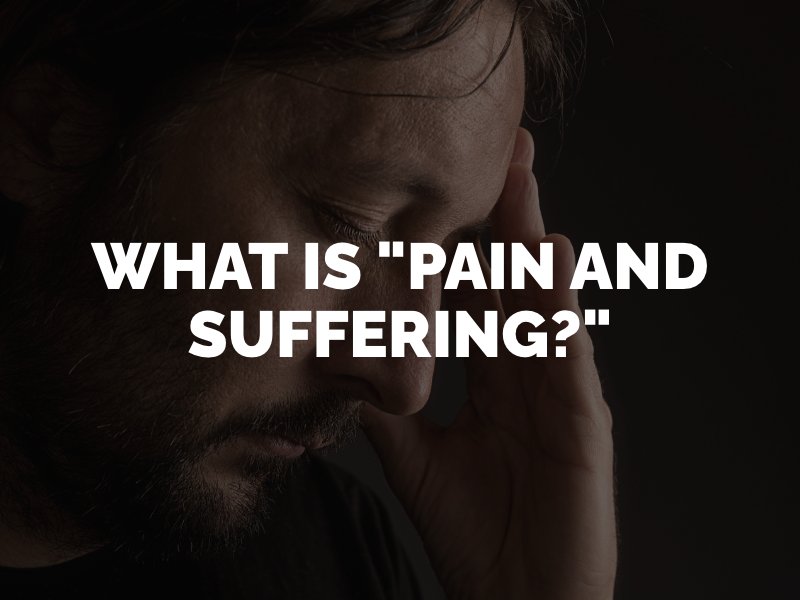What Are Damages for “Pain & Suffering?”
Pain and suffering damages are awarded to plaintiffs (victims) in Los Angeles personal injury cases for the physical and emotional distress they experienced due to the defendant’s (at-fault party’s) actions. “Pain and suffering” is an umbrella term that encompasses a wide range of damages, including physical pain, emotional distress, loss of enjoyment of life, loss of consortium, and disfigurement.

Physical Pain and Suffering
Physical pain and suffering refer to the actual physical pain and discomfort that the plaintiff experiences as a result of their injury. This includes everything from aches and soreness to chronic pain and severe disabilities.
Emotional Distress
Emotional distress is the psychological and emotional harm caused by the accident and the plaintiff’s injuries—for example, feelings of anxiety, depression, fear, anger, humiliation, etc.
Loss of Enjoyment of Life
Loss of enjoyment of life refers to the plaintiff’s inability to participate in activities that they previously enjoyed. This can include hobbies, sports, social activities, and other leisure activities.
Loss of Consortium
Compensation a spouse can recover for losing the ability to enjoy a normal relationship with the plaintiff. This can include both physical and emotional aspects of the relationship.
Disfigurement
Disfigurement refers to a permanent change in the plaintiff’s appearance due to their injury—for instance, scarring, loss of limbs, or other physical deformities.
How are Pain and Suffering Damages Calculated?
Calculating pain and suffering damages can be a complex process, as there is no fixed formula or objective standard for determining the value of these damages. Instead, courts consider a range of factors to determine what is fair and just compensation for the plaintiff. Some of those factors include:
- The severity of the injury.
- The length of recovery.
- The impact on daily life.
- The severity of the emotional impact.
- Pre-existing conditions: If the plaintiff had pre-existing conditions that were exacerbated by the injury, the pain and suffering damages may be lower.
- Jury perception: Juries tend to be more sympathetic to plaintiffs who have suffered catastrophic injuries, such as paralysis or loss of a limb, and may award higher pain and suffering damages in these cases.
Once the court has considered these aspects, it will use its discretion to determine the appropriate amount of pain and suffering damages to award. In general, pain and suffering damages can range from a few thousand dollars to millions of dollars, depending on the severity of the injury and its impact on the plaintiff’s life.
The Multiplier Method
The multiplier method is a common approach insurance companies and attorneys use to calculate or estimate pain and suffering damages in personal injury cases. Under this method, the plaintiff’s economic damages, such as medical bills and lost wages, are multiplied by a certain factor to determine the amount of non-economic damages, including pain and suffering. Generally, the multiplier will be higher for more severe injuries that have a greater impact on the plaintiff’s life.
For example, if a plaintiff incurs $50,000 in medical bills and lost wages due to a car accident and the multiplier used is 3, the pain and suffering damages would be calculated as follows:
$50,000 x 3 = $150,000
So the total damages award would be $200,000 ($50,000 in economic damages plus $150,000 in pain and suffering damages).
Does California Have a Cap on Pain and Suffering Damages?
California has no statutory cap on pain and suffering damages in most personal injury cases. However, there are some limitations in certain circumstances. For example, in medical malpractice cases, there is a $350,000 cap on non-economic damages, including pain and suffering, that can be awarded against healthcare providers in non-fatal cases and $500,000 in fatal cases.
